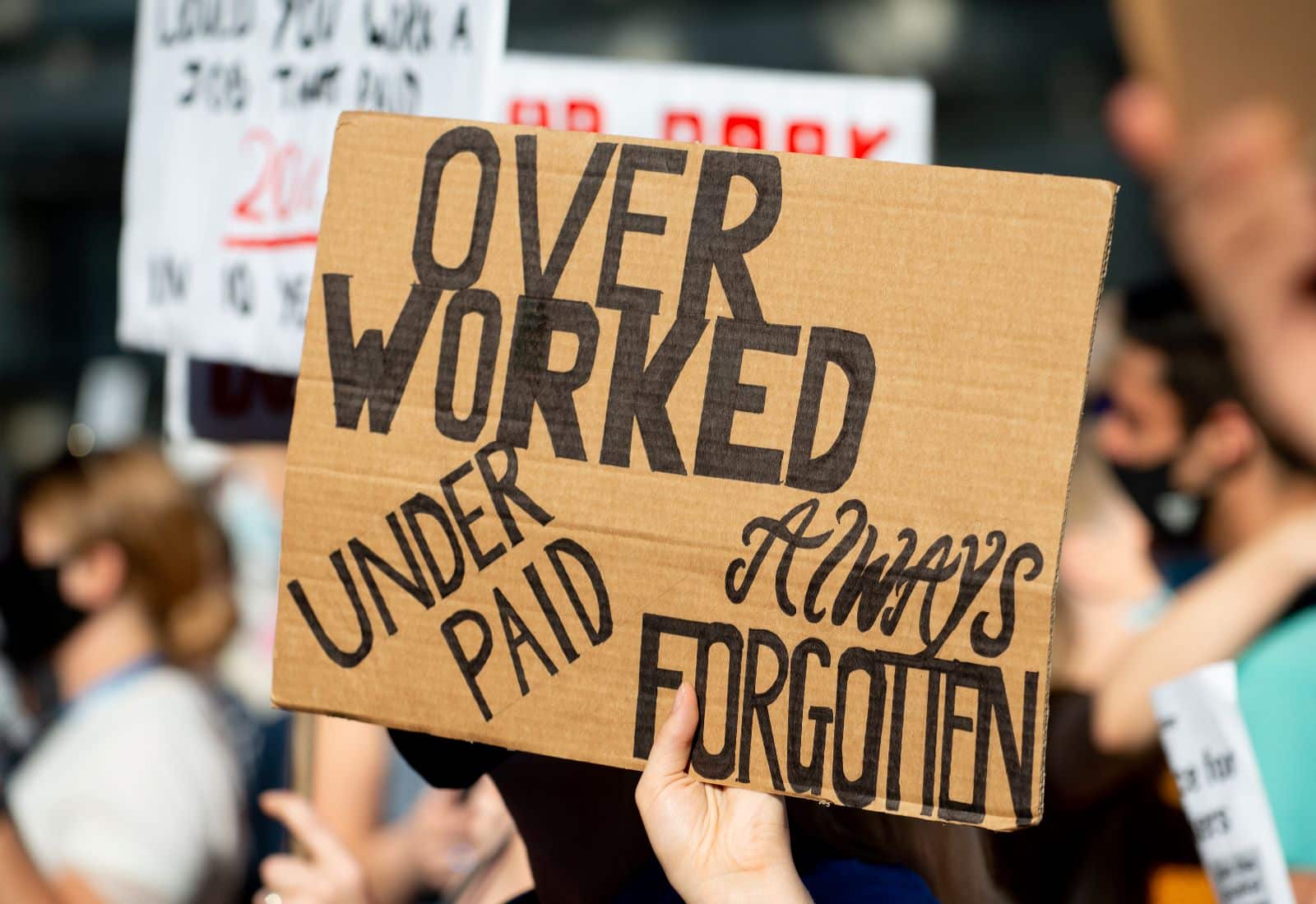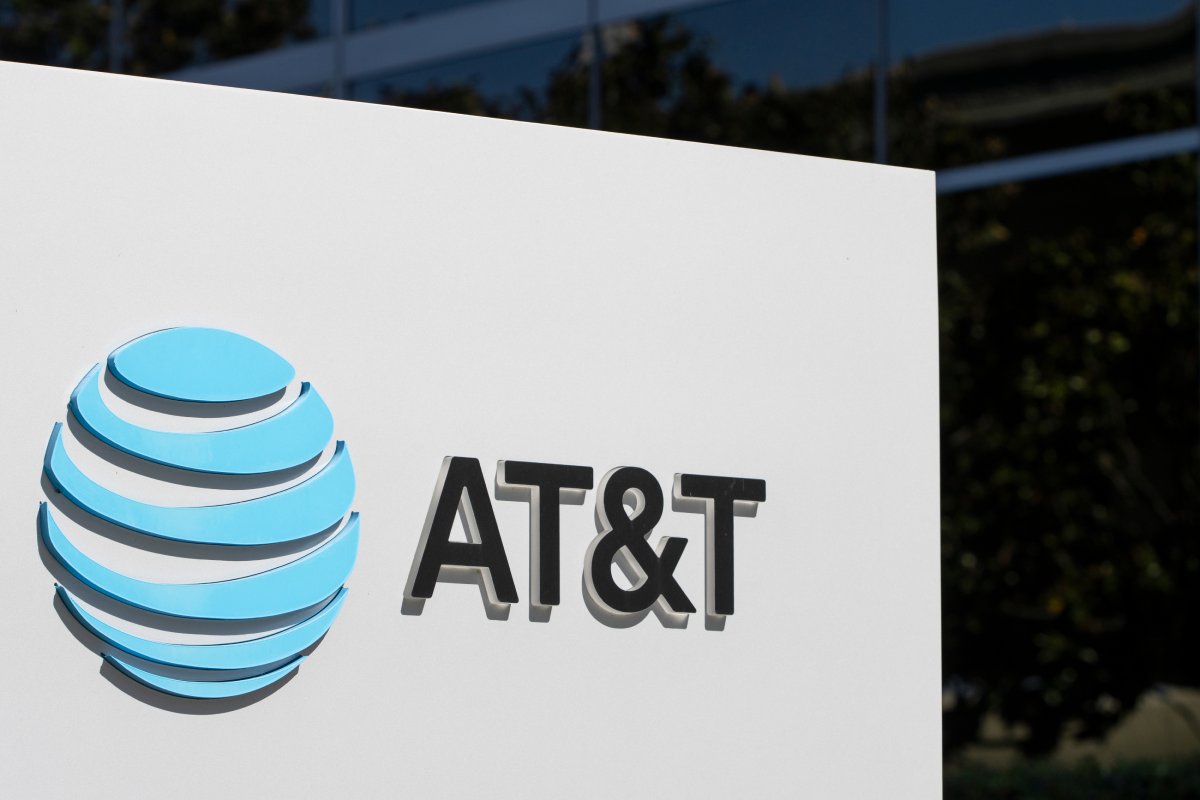Americans are fed up with work and now they’re striking.
From Mickey Mouse to Mop Buckets

Just this year we’ve seen picket lines at Southwest Airlines, railway workers gearing up to stop working, Denver janitors voting to put their mops down in protest over wages. Even Disneyland workers voted to strike earlier this year (which would have been their first strike in 40 years) although it was just narrowly avoided.
Rising Worker Discontent

Strikes and labor actions have been on the rise as workers push back against low wages, frequent job cuts, and poor working conditions, and 2023 saw major strike action increase by almost 300% across the country.
What About The American Dream?

Americans are clearly starting to get fed up with the state of the job market – which makes this next bit of news all the more easy to understand.
When the Lines Go Down

Almost 20,000 AT&T workers in the Southeast have just walked off the job. Why? Well, they’re accusing AT&T of dodgy behavior during contract negotiations and claiming the company’s been playing dirty with “unfair labor practices.”
A Summer of Discontent

Tensions have been rising since June 25, when contract talks kicked off between the Communications Workers of America (CWA) and AT&T Southeast.
Honeycutt’s Warning

Things have been rocky from the beginning. In their first meeting Richard Honeycutt – vice president of CWA District 3 – made it clear that workers had been suffering for years. He explained that wages, job security, and overall quality of life have taken a major hit – hence the call to strike.
Empty Chairs and Broken Promises

But red flags were raised as soon as AT&T came to the bargaining table. According to a statement from the CWA, the company sent negotiators who didn’t have the power to make any real decisions – essentially wasting everyone’s time and disrespecting the workers.
Bargaining Blunder

This cheeky move didn’t sit well with the union, and the CWA was quick to file an unfair labor practice charge with the National Labor Relations Board. They accused AT&T of “not bargaining in good faith.”
The Art of Fake Negotiations

The union claims AT&T engaged in “surface bargaining” – basically pretending to negotiate without actually trying to reach an agreement. To make matters worse, the company allegedly pulled out of agreements they’d already made – which has only fueled the union’s anger.
Calling Out Corporate Hypocrisy

According to Honeycutt, AT&T’s actions have basically been a slap in the face to the people keeping the company running. “Our members want to be on the job, providing the quality service that our customers deserve. It’s time for AT&T to start negotiating in good faith so that we can move forward towards a fair contract,” he said in a statement.
AT&T’s Defense

AT&T isn’t admitting to any of this. The company hit back, saying the union’s claims are baseless and that they’ve been eager to reach a fair deal from the start. They pointed to other recent agreements with unions in different states as proof that they’re not the bad guys.
Show Me the Money

But the CWA isn’t buying it. They believe AT&T’s recent actions – including plans to cut operating costs by replacing workers with AI, as well as other financial gains made off the back of its workers – show that the company is more interested in keeping a smile on its shareholders’ faces than treating its employees fairly.
The Triple Threat

Who’s bearing the brunt of those cuts? The workers – who are already dealing with inflation, job insecurity, and the lingering effects of the pandemic.
Billions in the Bank, Pennies for the People

With AT&T’s raking in around $37 billion in revenue since the last strike in 2019, workers claim that the company has plenty of cash to go around – they just don’t want to share it with the people who keep things running.
Southern Discomfort

This strike is impacting a lot of people. AT&T customers in Alabama, Georgia, and Tennessee are feeling the brunt of it, as technicians, customer service reps, and other essential workers strike.
The Ripple Effect of the Strike

Service disruptions are now a reality – what used to be a quick 24-hour fix could now be on hold for as long as the strike action lasts.
The Build-Up to Breaking Point

It’s been five years since the last AT&T strike. In that time workers have seen their quality of life eroded by everything from inflation to job cuts, according to the CWA. The pandemic made things worse, and now with AT&T’s latest plans to prioritize cost-cutting over employees, workers have reached their breaking point.
A Waiting Game

There’s no telling how long this strike will last. AT&T customers in the Southeast could be dealing with disruptions for a long old while, as the company and its workers try to figure things out.
AT&T’s Moment of Truth

As for AT&T, they have a big choice to make – either come back to the table with a serious offer or risk infuriating a huge part of their workforce.
Will AT&T Answer the Call?

Workers have made it clear they’re not backing down without a fair deal, so the ball is entirely in AT&T’s court.
Featured Image Credit: Shutterstock / Tada Images.
The content of this article is for informational purposes only and does not constitute or replace professional financial advice.
The images used are for illustrative purposes only and may not represent the actual people or places mentioned in the article.

